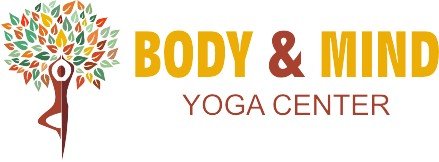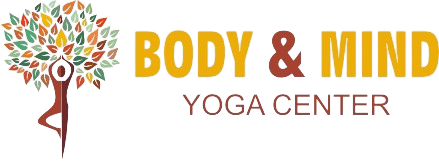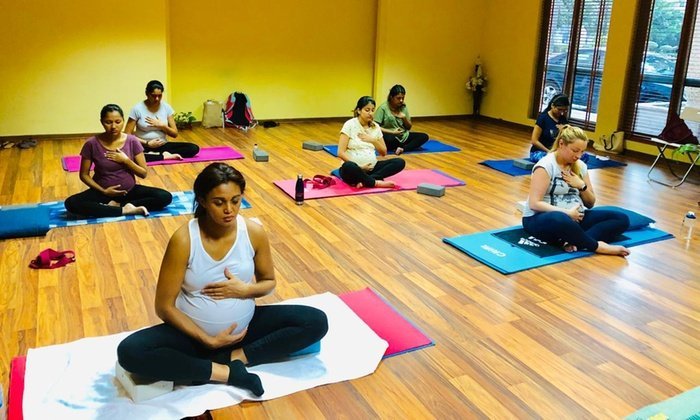Pregnancy is a transformative journey, and prenatal yoga offers a nurturing approach to support expectant mothers through this significant life phase. With tailored poses and mindful techniques, prenatal yoga fosters physical well-being, emotional balance, and a deeper connection with the growing baby. Explore the benefits and gentle poses that can alleviate discomfort, promote relaxation, and prepare mothers-to-be for the miracle of childbirth.
What is Prenatal Yoga?
Prenatal yoga is a specialized form of yoga designed to cater to the specific physical and emotional needs of pregnant women. It incorporates gentle stretches, modified poses, and breathing techniques that aim to promote physical strength, flexibility, and relaxation during pregnancy. This practice emphasizes creating a nurturing environment for both the mother and the developing baby, fostering overall well-being and preparing expectant mothers for childbirth.
Is First Trimester Yoga Safe?
First trimester yoga can be safe and beneficial when practiced with caution and modifications. It helps reduce stress, improve flexibility, and promote relaxation, which can be particularly helpful during early pregnancy. However, it’s important to avoid intense poses, deep twists, and exercises that involve lying on the back or stomach. Always consult with a healthcare provider before beginning any yoga routine during pregnancy to ensure it’s appropriate for your specific condition.
You May Like to Read : 5 Prenatal Yoga Poses For Second Trimester
Prenatal Yoga Benefits
There are numerous benefits to practicing prenatal yoga during pregnancy. First and foremost, it can help improve flexibility and strengthen your muscles, which can be especially beneficial during childbirth. Prenatal yoga can also help reduce stress and anxiety, decrease pregnancy-related discomforts such as back pain and nausea, and promote better sleep. Also, it provides an opportunity to connect with your baby and prepare for motherhood.
Prenatal Yoga Poses for First Trimester of Pregnancy
Cat-Cow Pose (Chakravakasana)
The Cat-Cow Pose, also known as Marjaryasana-Bitilasana, is a simple yet effective yoga pose that is often practiced in various yoga styles. It is particularly beneficial during pregnancy as it helps to alleviate back pain and improve spinal flexibility.
Benefits:
The Cat-Cow Pose enhances spinal flexibility, alleviates stress through deep breathing and mindful movement, supports improved posture and alignment, provides gentle abdominal massage for digestion and discomfort relief, and prepares the body for potential back labor during delivery.
How to Do It:
- Start on your hands and knees in a tabletop position, with your wrists directly under your shoulders and your knees under your hips.
- As you inhale, arch your back downwards, lifting your head and tailbone towards the ceiling, and let your belly sink towards the floor (Cow Pose).
- As you exhale, round your spine upwards, tucking your chin towards your chest and tucking your tailbone under (Cat Pose).
- Repeat this sequence, smoothly transitioning between Cow and Cat Pose, syncing your breath with the movement. Aim to create a fluid and gentle motion that feels comfortable for your body.
- Continue the sequence for several rounds, focusing on the sensation of the spine stretching and contracting with each movement.
Child’s Pose (Balasana)
Child’s Pose, also known as Balasana, is a relaxing and restorative yoga pose that is commonly practiced for its calming and grounding effects. It is often used as a resting position during a yoga practice and can be beneficial for both physical and mental relaxation.
Benefits:
Child’s Pose in prenatal yoga effectively relieves the pressure of a growing belly, widens hips, alleviates back pain, and aids in reducing stress and anxiety, promoting overall well-being during pregnancy.
How to Do It:
- Begin by kneeling on the floor, with your big toes touching and your knees slightly apart.
- Sit back on your heels and gently lower your torso forward, resting your forehead on the mat.
- Extend your arms forward, placing your palms on the floor or resting them alongside your body with the palms facing up.
- Allow your chest to sink towards the floor, and feel a gentle stretch in your hips, thighs, and lower back.
- Relax your entire body, and focus on taking slow, deep breaths.
- Hold the pose for as long as feels comfortable, allowing yourself to surrender to the posture and let go of any tension or stress.
Standing Side Stretch (Ardha Kati Chakrasana)
The Standing Side Stretch is a yoga pose that helps in releasing tension in the sides of the body, particularly the torso and the waist. It is a beneficial stretch that can be easily incorporated into a daily routine.
Benefits:
The Standing Side Stretch in prenatal yoga aids in improved flexibility, posture enhancement, stress relief, increased circulation, and enhanced breathing, promoting overall well-being during pregnancy.
How to Do It:
- Begin by standing with your feet hip-width apart and your arms relaxed at your sides.
- Raise your right arm overhead, and gently lean your upper body to the left, keeping your hips facing forward. Avoid leaning the entire body, instead focusing on creating a gentle stretch along the right side of the torso.
- To deepen the stretch, you can gently hold your left wrist with your right hand, allowing the left arm to lengthen alongside the left ear.
- Hold the stretch for 20-30 seconds while maintaining steady and even breathing.
- Repeat the stretch on the other side by raising your left arm overhead and leaning gently to the right.
Bound Angle Pose (Baddha Konasana)
Bound Angle Pose, also known as Baddha Konasana, is a seated yoga pose that helps in opening the hips and groin area. It is a gentle posture that can be particularly beneficial during pregnancy to alleviate discomfort and promote relaxation.
Benefits:
Bound Angle Pose, when practiced regularly, enhances hip flexibility, stretches the inner thighs and groin, reduces stress and anxiety, offers digestive support, and prepares the body for labor and childbirth.
How to Do It:
- Sit on the floor with your legs extended in front of you.
- Bend your knees and bring the soles of your feet together, allowing your knees to gently drop out to the sides.
- Hold your feet or ankles with your hands, and ensure that your spine is lengthened and your shoulders are relaxed.
- You can gently flap your knees up and down to create a butterfly-like motion, enhancing the stretch in the inner thighs and groin area.
- Maintain the pose for 30-60 seconds or as long as feels comfortable, focusing on steady breathing and relaxing the muscles.
Yoga Squat (Malasana)
The Yoga Squat, also known as Malasana, is a grounding yoga pose that helps in opening the hips and strengthening the lower body. It is a beneficial posture that can be particularly useful during pregnancy to maintain flexibility and prepare the body for childbirth.
Benefits:
Malasana, or the Yoga Squat, promotes hip and groin flexibility, enhances lower body strength, aids in digestive health, strengthens the pelvic floor muscles crucial for childbirth, and stimulates overall energy flow for vitality and rejuvenation.
How to Do It:
- Begin in a standing position with your feet slightly wider than hip-width apart.
- Slowly lower your body into a squatting position, bringing your hips close to the ground and allowing your heels to remain on the floor. If your heels do not touch the ground, you can place a folded blanket or a yoga block under them for support.
- Bring your palms together at your heart center, pressing your elbows gently against your inner thighs to create a light resistance.
- Keep your spine long and upright, and ensure that your chest is open and your shoulders are relaxed.
- Hold the pose for 30-60 seconds, focusing on steady breathing and maintaining a comfortable depth in the squat.
Vrksasana (Tree Pose)
Vrksasana, or Tree Pose, is a balancing posture that strengthens the legs and core while promoting a sense of grounding and stability.
Benefits:
Vrksasana enhances balance and stability in the legs while strengthening the thighs, calves, and ankles. It also opens the hips, stretches the inner thighs, and improves focus and concentration.
How to Do It:
- Start by standing tall in Tadasana (Mountain Pose) with your feet together and arms at your sides.
- Shift your weight onto your left foot, grounding it firmly into the mat.
- Slowly lift your right foot and place the sole on the inside of your left thigh or calf, avoiding the knee.
- Bring your palms together in front of your chest in a prayer position (Anjali Mudra).
- Focus your gaze on a fixed point in front of you to maintain balance.
- Hold for 5-10 breaths, then switch sides.
Supported Paschimottanasana (Seated Forward Bend)
Supported Paschimottanasana is a seated forward bend that gently stretches the spine, hamstrings, and lower back, often with the aid of a bolster or blanket for added support.
Benefits:
This pose deeply stretches the spine, shoulders, and hamstrings, promoting relaxation and stress relief. It also aids digestion and stimulates the liver and kidneys.
How to Do It:
- Sit on the floor with your legs extended straight in front of you, feet flexed.
- Place a bolster or folded blanket over your thighs for support.
- Inhale to lengthen your spine, then exhale as you gently fold forward from the hips.
- Rest your torso on the bolster and let your head relax, reaching towards your feet.
- Hold for 1-3 minutes, breathing deeply and releasing any tension.
Konasana (Side Angle Pose)
Konasana, or Side Angle Pose, is a powerful standing posture that stretches the sides of the body, improves flexibility, and strengthens the legs.
Benefits:
Konasana strengthens the legs, knees, and ankles while stretching the hips, groins, and shoulders. It also opens the chest, improving respiratory function and enhancing balance.
How to Do It:
- Begin in a wide-legged stance, with your feet about 3-4 feet apart.
- Turn your right foot out 90 degrees and your left foot slightly inwards.
- Bend your right knee to form a 90-degree angle, keeping the left leg straight.
- Lower your right forearm onto your right thigh or place your right hand on the floor outside your right foot.
- Extend your left arm overhead, reaching towards the sky, and gaze up at your left hand.
- Hold for 5-10 breaths, then switch sides.
Trikonasana (Triangle Pose)
Trikonasana, or Triangle Pose, is a foundational standing posture that stretches and strengthens the entire body while improving balance and alignment.
Benefits:
Trikonasana provides a full-body stretch, targeting the legs, hips, and spine while opening the chest and shoulders. It strengthens the legs and core, and stimulates digestive organs.
How to Do It:
- Stand with your feet about 3-4 feet apart, arms extended parallel to the floor.
- Turn your right foot out 90 degrees and your left foot slightly inward.
- Inhale, lengthen your spine, and reach your right hand forward.
- Exhale, hinge at the hips, and lower your right hand to your shin, ankle, or the floor outside your right foot.
- Extend your left arm towards the sky, forming a straight line from your left hand to your left foot.
- Gaze up at your left hand, keeping your chest open.
- Hold for 5-10 breaths, then switch sides.
Virabhadrasana (Warrior Pose)
Virabhadrasana, or Warrior Pose, is a powerful standing posture that embodies strength, focus, and stability, named after the mythic warrior Virabhadra.
Benefits:
This pose builds strength in the legs, hips, and shoulders, while stretching the chest and lungs. It enhances balance, stability, and endurance, energizing both the body and mind.
How to Do It:
- Begin in a wide-legged stance, with your feet about 3-4 feet apart.
- Turn your right foot out 90 degrees and your left foot slightly inwards.
- Bend your right knee over your right ankle, forming a 90-degree angle with the thigh parallel to the floor.
- Extend your arms out to the sides, parallel to the floor, palms facing down.
- Gaze over your right hand, keeping your spine straight and chest open.
- Hold for 5-10 breaths, then switch sides.
In conclusion, the practice of prenatal yoga offers numerous physical and emotional benefits for expectant mothers, promoting overall well-being and preparation for childbirth. With a focus on gentle stretches, modified poses, and breathing techniques, it fosters strength, flexibility, and relaxation during pregnancy. Join us at Body and Mind Yoga Center, where our specialized prenatal yoga classes in Dubai provide a nurturing environment for mothers-to-be to connect with their bodies and their growing babies.



